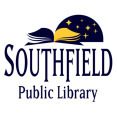In 1817, the area now known as Southfield was first surveyed and called Township 1 North Range 10 East.

In 1823, although others had visited as early as 1821, John Daniels was the first to settle in the township, occupying property in Sec 4 (near Bingham and 13 Mile roads). Daniels returned to the East and brought back with him the Lee, Cook, and White families. “The Lees settled north of Eleven Mile Road, east of Inkster Road. The Whites settled on Franklin Road, near the Lee family” (Southfield: Focus on Progress, p. 9). In 1824, the Stoughton, Bullock, and Gage families settled in what became Franklin Village. Elisha Hunter settled on 160 acres near 13 Mile and Lahser; Moses Rodgers stayed near 8 Mile and Beech.
Southfield was not established as a township until July 12, 1830, when it was originally designated “Ossewa.” On July 29, 1830, the name was changed to Southfield. “The first annual meeting of Southfield Township was held on April 4, 1831, at the home of Benjamin Fuller” (Oakland County Book of History, p. 364). At this meeting, it was resolved that town meetings would be held annually. The Fuller house remains standing on Civic Center Drive, north of Telegraph.
Incorporation
Franklin Village began to be developed in 1828 and grew more rapidly than other areas in the township. It was incorporated as a Home Rule Village in 1953.
John Thomas and Abraham Crawford began a settlement that was located at the present intersection of 10 Mile and Lahser. This area became known as “Crawford Corners,” and was the first center of Southfield. Thomas opened a tavern called “Tom’s Tavern,” and in 1833, the Southfield Post Office was opened in the tavern with Mr. Thomas as Postmaster. The Township meetings were held at the tavern for a time and the Militia also trained at the ‘Corners.’ ” (Oakland County Book of History, p. 365).
 In 1833, John Daniels built a sawmill on the west branch of the Rouge River. He was the first in the territories west of New York to use mules to power the mill. This earned him the title of “Mulley-Mill Pioneer of the West.”
In 1833, John Daniels built a sawmill on the west branch of the Rouge River. He was the first in the territories west of New York to use mules to power the mill. This earned him the title of “Mulley-Mill Pioneer of the West.”
A grist mill was built by Ezekial Sabins, in 1837, along the banks of the Rouge River, attracting others to this area. “The building of the grist mill resulted in the development of the village.” (Southfield: Focus on Progress, p. 11). A tavern and hotel were opened in a large frame house built by Cornelius Lawrence. The area was known as the “Burgh,” but was later named Southfield Center. In 1838, John Trowbridge moved his general store to the Burgh and, soon after, Crawford’s Corners became a memory. As population grew in the area, there was a demand for an official township facility and the central location of the Burgh was chosen. The first Town Hall was built in 1872, a simple wood frame building, and it still stands today at the Burgh Historical Site.
Lathrup Village was founded in 1926 and incorporated in 1953.
Beverly Hills was first incorporated as the Village of Westwood in 1958, but was renamed Beverly Hills a year later.

On June 7, 1955, Southfield voted to incorporate as a home rule city. On December 12, 1955, the first election was held to pass the charter. It was defeated. In October 1956, a map of the “Ward System as written into the proposed Charter for the City of Southfield” was published in the Four Corners Press, and, in November, a copy of the proposed Charter was published. The second charter vote, held December 6, 1956, was also defeated, by a mere 44 votes.
An article in the Four Corners Press (Dec. 27, 1956) had the headline “Two Mayors, No City: Unique Southfield Status.” Donald Swanson and Eugene Swem, who were both strongly in favor of home rule status, agreed to be co-mayors and work towards getting the charter passed in the next election, which was to be held June 7, 1957. Southfield now had only one more chance to pass the charter vote. For a third time, the charter did not pass. Finally, a charter was created that called for the creation of Beverly Hills, and Beverly Hills and Southfield would become separate municipalities. In an election held in August 1957, the charter was passed by a 4-1 voter approval.

The first regular meeting of the Council of the City of Southfield was held April 28, 1958. The first call of action was to adopt Roberts Rules of Order to govern the sessions of the City Council. Eugene Swem was appointed by the Council to the position of temporary City Administrator. Southfield was allowed three representatives to the Oakland County Board of Supervisors at this time.
Resources in the Library
Book Titles:
- All About Franklin: From Pioneers to Preservation, Bettie Waddell Cannon, 1979, SFLD HIST REF 977.431 CAN
- A Brief History of Southfield, Kenson Siver, 1996, SFLD HIST REF 977.438 S
- City of Southfield: Now and Then, 40th Anniversary, Robyn Gorell, 1998, SFLD HIST REF 977.438 GOR
- Oakland County Book of History, Arthur A. Hagman (ed.), 1970, SFLD HIST REF 977.438 O
- Southfield Faces the Crucial Decades: the Development of a Suburb and its School System in the Years Following World War II, Kenson J. Siver, 1987, SFLD HIST REF 379.7745 SIV
- Southfield: Focus on Progress, Community Relations Seminar, 1964, SFLD HIST REF 977.438 SOU
- Southfield, Yesterday and Today, Vicki Goldbaum, 1974, SFLD HIST REF 977.438 GOL
- Southfield, Yesterday and Today, 2nd ed. Vicki Goldbaum, 1983, SFLD HIST REF 977.438 GOL

